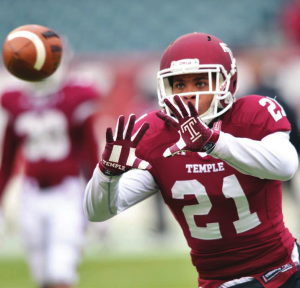WGM explains the strategies that make US College Football such an attractive option for serious sports bettors.
College Football could best be described as the fast food of the sports betting world. It’s not hard to find, it can be unpalatable if you consume too much but there’s a guilty pleasure to a giant serve (with fries). And for most punters outside of North America, the ingredients can be more than a little confusing.
To all intents and purposes, College Football is played by amateur student athletes in American universities, colleges and military academies under the auspices of the National Collegiate Athletic Association (NCAA).
Just how “amateur” is open to interpretation. The top tier – the Division 1 Football Bowl Subdivision (FBS) – consists of 125 teams alone and is spread across 11 conferences. Teams play just 12 regular season games and are ranked via a series of polls, with the Associated Press poll rated the most credible. The top four teams in the country play in semi-final games (1 v 4, 2 v 3) with the winners advancing to the national championship game.

For the casual punter, there’s simply too much College Football to possibly process. Across the United States, there are almost 800 colleges and universities that offer football programs, so if you’re considering adding College Football to your betting portfolio, maybe focus on two or three conferences to start. That said, you’ll quickly get up to speed on the news and data relating to those schools and conferences. The amount of information available on College Football is staggering.
Due to the massive following in the sport of students past and present, information is available across traditional media and, increasingly, via blogs, Twitter feeds and other forms of social media. One of our favorites is the Facebook commentary that runs in conjunction with each NCAA game preview on ESPN.com. Amid the bias and one-sided banter, you’ll regularly find some great inside info relating to form, injuries, weather and more.
Most NFL bettors will be tempted across to the college game at some point, lured by those tasty lines and sometimes outrageous over/under numbers. It’s important to realize that these are two very different games. The field dimensions are the same – 100 yards long (plus 10-yard end zones, making 120 yards in total) by 53.33 yards wide – but the placement of the hash-marks is different. The marks are much closer together on an NFL field.

For a college team, that means they have a wide expanse of field to use on one side and a rather narrow area in which to operate on the other. The NCAA and NFL also use different clock rules. The NCAA stops the clock whenever a first down is achieved so that the chains can be reset. Once they are in place, the clock resumes. In the pro game, the clock keeps running. That has huge implications at the end of games when time is short. A team can afford to throw the ball over the middle of the field because the clock will briefly stop.
The best bettors can make decent money from College Football but it takes patience. One strategy to which we’ve subscribed over recent seasons involves betting favorites of between 20 and 25 points. Over the past six seasons, there have been almost 400 instances of this situation – roughly 65 per season and more than four per week. Under those circumstances, the favorites won just shy of 95 percent of the time straight up.
Investing equal amounts on all contests produced six successive years of profit returns with an average annual return north of 12 percent. Many punters will scoff at such a strategy as it requires a significant investment and willpower to ignore the sick action that’s available. Yes, you’ll be eating plenty of chalk on short-priced favorites but it’s a solid three-course meal amid a smorgasbord of options not worthy of the best Vegas buffets!
- As with all forms of sports betting, ensure you have appropriate bankroll strategies in place, always chase the best possible price and understand the concept of value when making College Football wagers.







